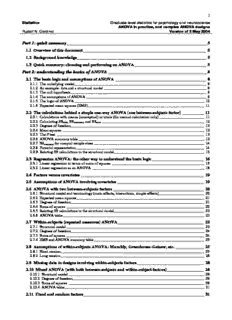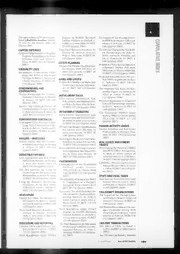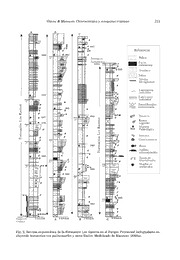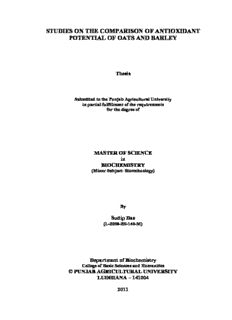
studies on the comparison of antioxidant potential of oats and barley PDF
Preview studies on the comparison of antioxidant potential of oats and barley
STUDIES ON THE COMPARISON OF ANTIOXIDANT POTENTIAL OF OATS AND BARLEY Thesis Submitted to the Punjab Agricultural University in partial fulfillment of the requirements for the degree of MASTER OF SCIENCE in BIOCHEMISTRY (Minor Subject: Biotechnology) By Sudip Das (L-2008-BS-140-M) Department of Biochemistry College of Basic Sciences and Humanities © PUNJAB AGRICULTURAL UNIVERSITY LUDHIANA – 141004 2011 CERTIFICATE I This is to certify that the thesis entitled, “Studies on the comparison of antioxidant potential of oats and barley.” submitted for the degree of Master of Science in the subject of Biochemistry (Minor subject: Biotechnology) of the Punjab Agricultural University, Ludhiana, is a bonafide research work carried out by Sudip Das (L-2008-BS-140-M) under my supervision and that no part of this thesis/dissertation has been submitted for any other degree. The assistance and help received during the course of investigation have been fully acknowledged. ____________________________ Major Advisor Dr. (Mrs.) Manjeet Kaur Sangha Biochemist Department of Plant Breeding and Genetics Punjab Agricultural University Ludhiana - 141004 CERTIFICATE II This is to certify that the thesis entitled, “Studies on the comparison of antioxidant potential of oats and barley” submitted by Sudip Das (L-2008-BS-140-M) to the Punjab Agricultural University, Ludhiana, in partial fulfillment of the requirements for the degree of M.Sc. in the subject of Biochemistry (Minor subject: Biotechnology) has been approved by the Student's Advisory Committee along with Head of the Department after an oral examination on the same. _____________________ _______________________ Head of the Department Major Advisor (Dr. A. K. Gupta) (Dr. (Mrs.) Manjeet Kaur Sangha) _________________________ Dean Postgraduate Studies (Dr. Gursharan Singh) AAAACCCCKKKKNNNNOOOOWWWWLLLLEEEEDDDDGGGGEEEEMMMMEEEENNNNTTTTSSSS First of all, I bow my head and express my profound gratitude before AAAAllllmmmmiiiigggghhhhttttyyyy who gave me the strength for accomplishment of each and every task and with whose blessings I have been able to complete this phase of my life. I wish to express my deepest sense of gratitude and indebtedness to my advisor DDDDrrrr.... ((((MMMMrrrrssss....)))) MMMMaaaannnnjjjjeeeeeeeetttt KKKKaaaauuuurrrr SSSSaaaannnngggghhhhaaaa,,,, Biochemist, (Oilseeds), Department of Plant Breeding and Genetics for her invaluable guidance, constant encouragement, keen interest, friendly attitude, immense patience, useful discussion and peerless criticisms during the course of investigation which helped me to learn something from her at each and every moment of my degree. She has always been a source of inspiration to me. I owe my profound thanks to DDDDrrrr.... AAAA.... KKKK.... GGGGuuuuppppttttaaaa,,,, Head and Professor, Department of Biochemistry and as member of my advisory committee, for providing me the necessary facilities and healthy criticism throughout the course of this study. I feel immense pleasure to convey my heartfelt thanks to my advisory committee members, DDDDrrrr.... JJJJ.... SSSS.... SSSSiiiittttaaaallll,,,, Professor of Biochemistry, (Dean PG’s nominee) and DDDDrrrr.... SSSS....SSSS.... GGGGoooossssaaaallll,,,, Director of Research, P.A.U., for their encouragement and invaluable suggestions endowed during the course of my research work. It is great privilege for me to express my esteem and profound sense of gratitude to DDDDrrrr.... DDDD.... PPPP.... CCCChhhhaaaauuuuddddhhhhaaaarrrryyyy, Biochemist, Directorate of Maize Research, I.A.R.I. and my ex- advisor, for his constructive and valuable suggestions. He was always there in all my needs and helped me to his best. I take this opportunity to extend my gratitude DDDDrrrr.... ((((MMMMrrrrssss....)))) AAAA....KKKK.... AAAAttttwwwwaaaallll,,,, Senior Biochemist, Department of Plant Breeding and Genetics, for her help, proficient guidance and good wishes during the tenure of research. I feel proud to be a son of revered parents. Their endless love, affection, sacrifice and constant inspiration enabled me to reach the footsteps of my long cherished aspiration. My vocabulary utterly fails in expressing my love to my dear sister, AAAAnnnnaaaammmmiiiikkkkaaaa,,,, dear brother SSSSuuuubbbbhhhheeeennnndddduuuu,,,, and my beloved friends AAAAsssshhhhiiiimmmmaaaa, SSSSiiiimmmmaaaa,,,, SSSSoooommmmaaaa,,,, PPPPrrrreeeeeeeettttiiii aaaannnndddd RRRRiiiiyyyyaaaa,,,, for their continuous support during all the years of study. It gives me immense pleasure to mention the names of PPPPrrrraaaabbbbhhhhjjjjooootttt,,,, PPPPrrrraaaagggghhhhaaaaddddeeeeeeeesssshhhh,,,, RRRRaaaavvvvnnnneeeeeeeetttt,,,, KKKKaaaarrrraaaannnnhhhh GGGGhhhhaaaaiiii,,,, AAAAnnnnjjjjuuuu,,,, AAAArrrruuuunnnn SSSShhhhaaaannnnkkkkaaaarrrr,,,, SSSShhhhbbbbhhhhaaaannnnkkkkaaaarrrr MMMMaaaannnnddddaaaallll,,,, RRRRaaaakkkkeeeesssshhhh,,,, SSSSaaaattttyyyyaaaapppprrrrkkkkaaaasssshhhh,,,, AAAAmmmmaaaannnnddddeeeeeeeepppp SSSSiiiinnnngggghhhh,,,, DDDDeeeebbbbaaaassssiiiisssshhhh,,,,BBBBiiiisssswwwwaaaannnnaaaatttthhhh,,,, PPPPrrrraaaaffffuuuullll ,,,, KKKKeeeettttaaaannnn,,,, JJJJaaaassssbbbbiiiirrrr,,,, HHHHaaaarrrrddddeeeeeeeepppp,,,, NNNNiiiikkkkhhhhiiiillll,,,, RRRRoooosssshhhhaaaannnn,,,, SSSSaaaannnnddddeeeeeeeepppp,,,, SSSSuuuurrrreeeesssshhhh,,,, HHHHaaaarrrrsssshhhhaaaadddd,,,, JJJJuuuulllliiiiuuuussss aaaannnndddd AAAAbbbbhhhhiiiijjjjiiiitttt whose constant support, help and collective efforts have been reflected in the completion of this venture. The unceasing affection and support of all my seniors SSSShhhhiiiillllppppaaaa GGGGuuuuppppttttaaaa,,,, TTTTiiiillllaaaakkkk,,,, SSSSaaaannnnjjjjuuuullllaaaa,,,, AAAArrrrvvvviiiinnnndddd,,,, BBBBaaaasssshhhhaaaarrrraaaatttt,,,, HHHHiiiitttteeeesssshhhh,,,, DDDDeeeeeeeeppppaaaakkkk,,,, MMMMrrrriiiiggggaaaannnnkkkkaaaa aaaannnndddd SSSSaaaannnnkkkkuuuu would be in my memory forever. I extend my heartfelt thanks to my juniors like JJJJiiiibbbbaaaannnn and BBBBaaaappppiiii for their firm support and spontaneous help throughout this endeavour. My sincere thanks to MMMMrrrr.... SSSSaaaammmmaaaattttrrrraaaammmm,,,, MMMMrrrr.... HHHHeeeemmmmrrrraaaajjjj,,,, MMMMrrrr.... AAAAmmmmaaaarrrr SSSSiiiinnnngggghhhh and other laboratory staff who were always available for the help during my research work. DDDDaaaatttteeee:::: SSSSuuuuddddiiiipppp DDDDaaaassss Title of the Thesis : “Studies on the comparison of antioxidant potential of oats and barley.” Name of the Student : Sudip Das and Admission No. (L-2008-BS-140-M) Major Subject : Biochemistry Minor Subject : Biotechnology Name and Designation : Dr. (Mrs.) Manjeet Kaur Sangha of Major Advisor Biochemist Degree to be Awarded : M.Sc. Year of Award of Degree : 2011 Total Pages in Thesis : 71+Vita Name of University : Punjab Agricultural University Ludhiana-141004, Punjab (India) ABSTRACT The present study aimed at evaluating the antioxidant potential of barley and oat forage crops (RD-2552 and OL-9 respectively) under normal field conditions at 30, 60 and 90 days after sowing and of grains of barley genotypes viz. RD-2552, PL-172, PL-807, PL-426, DWRUB- 52 and VJM-201 and oat genotypes viz. 0L-9, 0S-6, OS-7, HJ-8 and HF0-114. The antioxidant potential was estimated in terms of activities of antioxidant enzymes viz. superoxide dismutase (SOD), catalase (CAT), ascorbate peroxidase (APX), glutathione reductase (GR) and peroxidase (POD) and ascorbic acid (Vit.C) content. Contents of hydrogen peroxide (H O ) and malondialdehyde (MDA) were also estimated. Antioxidant 2 2 enzymes activities and Vit.C registered maximum value at 60 DAS in both the crop leaves. The values were significantly (CD 5%) higher in barley as compared to oat leaves at all the three vegetative stages. H O content was minimum at 60 DAS whereas MDA content was 2 2 lowest at 30 DAS in both the crop leaves. The levels were however significantly (CD 5%) lower in barley as compared to oat leaves. Among different barley grains PL-172, RD-2552, PL-807 and DWRUB-52 had higher and VJM-201 and PL-426 lower antioxidant enzyme activities and Vit.C content. There seemed to be no association between two rowed and six rowed barley genotypes and antioxidant enzyme activities. H O content was lowest in PL- 2 2 807 and highest in VJM-201. MDA content was undetected in PL-172 and highest in VJM- 201. In oats OL-9, OS-6 and OS-7 grains had high antioxidant enzyme activities and Vit.C content whereas HJ-8 and HFO-114 grains registered lower values. However these genotypes had higher H O and MDA levels. The study depicts that barley crop and grains inherently 2 2 have higher antioxidant potential as compared to oat crop and grains. Keywords: Barley, Oats, Antioxidant enzymes, Leaves, Grains ________________________ _____________________ Signature of Major Advisor Signature of the Student KKKKoooojjjj----iiiinnnnbbbbMMMMDDDD ddddffff iiiissssrrrrllllyyyyKKKKLLLL : “jON aqy jvI dI axafksIikRq smrQf df aiDaYn” iiiivvvviiiiddddaaaaffffrrrrQQQQIIII ddddffff nnnnffffmmmm : sudIp dfs aaaaqqqqyyyy ddddffffKKKKLLLLllllffff kkkkRRRRmmmmFFFFkkkk (aYl -2008-bI aYs-140-aYm) ppppRRRRmmmmuuuuwwwwKKKK iiiivvvvssssLLLLffff : jIv-rsfiex ivigafn AAAAuuuupppp----iiiivvvvssssLLLLffff : jYv qknflOjI mmmmuuuuwwwwKKKK ssssllllffffhhhhkkkkffffrrrr ddddffff nnnnffffmmmm : zf (ÈRImqI) mnjIq kOr sMGf aaaaqqqqyyyy aaaahhhhuuuuddddffff jYv rsfiex ivigafnI iiiimmmmllllxxxx vvvvffffllllIIII iiiizzzzggggrrrrIIII : aYm[aYs sI[ iiiizzzzggggrrrrIIII iiiimmmmllllxxxx ddddffff ssssffffllll : 2011 KKKKoooojjjj----iiiinnnnbbbbMMMMDDDD ddddyyyy ppppMMMMnnnnyyyy : 71+ vfeItf XXXXUUUUnnnnIIIIvvvvrrrriiiissssttttIIII ddddffff nnnnffffmmmm : pMjfb KyqIbfVI XUnIvristI, luiDafxf – 141004 ssssffffrrrr----aaaaMMMMssssLLLL mOjUdf aiDaYn df mnorQ sDfrx Kyq-hflfqF aDIn jON (RD-2552) aqy jvI (0L-9) dI cfrf Psl bIjx dy 30, 60 aqy 90 idnF bfad jON jInotfeIpF RD-2552, PL-172, PL-807, PL-426, DWRUB-52 aqy VJM-201 dy dfixaF aqy jvI jInotfeIpF 0L-9, 0S-6, OS-7, HJ-8 aqy HF0-114 dy dfixaF nUM lY ky axafksIikRq smrQf df mulFkx kIqf igaf. axafksIikRq smrQf df anumfn axafksIikRq aYnjLfeImF ijvyN suprafksfeIz izsimAUtyj, kYtflyjL, aYskOrbyt prafksIzyË, glUtfQfeIEn rIzwktyjL aqy prafksIzyjL aqy aYskfribk eyisz dI mfqrf/sfmgrI dIaF srgrmIaF dy rUp ivc lgfieaf igaf. hfeIzRojn prafksfeIz aqy mYlonzfeI-aYlzIhfeIz df anumfn vI lgfieaf igaf. dohF PLsl pwiqaF ivc 60 (zI ey aYs) qy axafksIikRq aYnjLfeIm gqIivDIaF aqy aYskfribwk eyisz (ivtfimn sI) dI sB qoN vwD kImq sI. sB iqMny bnspqI pVfvF ivwc jvI pwiqaF dy mukfbly jON ivc kImqF aihm qOr qy vwD (5% sI [zI[) sn. dohF PLsl pwiqaF ivc hfeIzRojn prafksfeIz mfqrf 60 idn qy Gwt qoN Gwt sI, jdoN ik aYm zI ey dI mfqrf 30 (zI ey aYs) qy Gwt qoN Gwt sI. pr, jvI pwiqaF dy mukfbly jON pwiqaF ivwc aihm qOr qy Gwt (5% sI zI) sn. vwK vwK jON dfixaF PL-172, RD-2552, PL-807 aqy DWRUB-52 ivckfr vwD aqy VJM-201 aqy PL-426 ivc Gwt axafksIikRq aYnjLfeIm srgrmIaF aqy ivtfimn sI dI mfqrf pfeI geI. do kqfrbwD aqy 6 kqfrbwD jON jInotfeIpF aqy axafksIikRq aYnjLfeIm srgrmIaF ivckfr koeI sMbMD nhIN lgdf sI. pI aYl – 807 ivc hfeIzRojn prafksfeIz mfqrf sB qoN Gwt sI, aqy VJM- 201 ivc sB qoN vwD. PL-172 ivc aYm zI ey mfqrf df pqf nf lwgf, aqy ieh VJM-201 ivc sB qoN vwD sI. jvI dy OL-9, OS-6 aqy OS-7 dfixaF dIaF axafksIikRq aYnjLfeIm srgrmIaF aqy ivtfimn sI mfqrf vwD sn, jdoN ik HJ-8 aqy HFO-114 dfixaF ny Gwt kImqF ivKfeIaF. pr, ienHF jInotfeIpF dy hfeIzRojn prafksfeIz aqy aYm zI ey pwDr AuWcy sn. aiDaYn qoN pqf lwgf ik jON PLsl aqy dfixaF ivc jvI PLsl aqy dfixaF dy mukfbly ivrfsqI qOr qy AuWc axafksIikRq smrQf sI. mmmmuuuuwwwwKKKK ssssLLLLbbbbdddd: jON, jvI, axafksIikRq aYnjLfeIm, pwqy, dfxy ____________________ ________________ mmmmuuuuwwwwKKKK ssssllllffffhhhhkkkkffffrrrr ddddyyyy hhhhssssqqqqffffKKKKLLLLrrrr iiiivvvviiiiddddaaaaffffrrrrQQQQIIII ddddyyyy hhhhssssqqqqffffKKKKLLLLrrrr CONTENTS CHAPTER TITLE PAGE NO. I INTRODUCTION 1-3 II REVIEW OF LITERATURE 4-17 III MATERIALS AND METHODS 18-22 IV RESULTS AND DISCUSSION 23-55 V SUMMARY 56-57 REFERENCES 58-71 VITA Chapter I INTRODUCTION Oats and barley are two important non-legume winter forages of northern India. Oats (Avena sativa L.) rank around sixth in world cereal statistics following wheat, maize, rice, barley and sorghum, while barley ranks fourth among cereals in worldwide production. Oats are presently grown in temperate parts of the world including USA, Canada, and Europe as spring sown cultivars. In India oats are one of the important cereal fodder crop grown under irrigated conditions in the winter season in the North western, Central India and now extending to the Eastern region. The crop is grown in Punjab, Haryana, Jammu and Kashmir, Himachal Pradesh, Uttar Pradesh, Madhya Pradesh, Rajasthan, Maharashtra and Bengal. The average yield varies from 45-55 tons of green fodder/hectare. Absence of proper awareness among farmers resulted in narrow area of adaptation. Out of 8.3 million hectare cultivated area in fodder crops, oats are cultivated on about one lakh hectare area in India. Oats is an important crop because of its excellent growth character, quick re-growth and economic source of dietary energy. Oats are largely used in cattle breeding and have occurred in human diet for a long time, mainly as oatmeal and rolled oats, but the positive physiological effects of oat products were recognized just rather recently (Pirjo et al 2003). Oats are a rich source of soluble fibre, well-balanced proteins, several vitamins and minerals essential for the human health (Charalampopoulos et al 2002, Demirbas 2005, Esposito et al 2005). Oats contain relatively high amount of lipids compared with other cereal grains, with a substantial level of essential linoleic acid (Hareland and Manthey 2003). Oats are source of several natural antioxidants which contribute to the stability and the taste of food products (Peterson 2001). Oats are also important component of diet for hyper-cholesterolemic patients (Czerwinski et al 2004). Barley (Hordeum vulgare L.) is one of the first domesticated cereals of the world. It is a temperate as well as tropical crop and widely adaptable to various climatic conditions. Russia is the largest producer of barley followed by Canada and Germany. The world production has remained quite stable since 1970s. The European Union has the maximum consumption level distantly followed by Russia and Canada. The cultivation of barley in India is mainly concentrated in areas of Uttar Pradesh, Rajasthan and Madhya Pradesh. Barley production in India is 1.33 million tonnes out of a total grain production of 219 million tonnes. It is grown approximately on an area of 65800 hectares in India and about 16000 hectares in Punjab. The sowing period of barley in India is around October and November and the harvesting period is around March and April. It is staple food diet of many countries and is largely required for making breads and beer. Animal food and livestock is the primary use of barley crop. Malt is another important use of this crop. Barley is nutritious cereal grain that supply many bioactive compounds, dietary fibre, antioxidants, vitamins, minerals (calcium, magnesium potassium, phosphorous), sphingolipids and unsaturated fatty acids. In many studies, eating whole grains has been linked to protection against atherosclerosis, ischemic stroke, diabetes, insulin resistance, obesity and cancer (Behall et al 2004). In semi arid zones, farmers cultivate barley as a dual purpose crop. During the scarcity period farmers harvest it for fodder and then leave the crop for grain purposes. The striking difference between oats and barley is their water requirement. While oats need continuous irrigation, barley is a hardy crop and is often grown under rain-fed conditions. The most important characteristic of barley is its ability to grow under drought condition. While claims are often made about the wide adaptability of various cereal crops, barley is considered the champion cereal. It is grown in a range of extreme environments that vary from northern Scandinavian to the Himalayan Mountains to monsoon paddy. In India, barley has traditionally been considered as a poor man’s crop because of its low input requirements and better adaptability to harsh conditions like salinity or alkalinity, marginal lands and draught plants and it has been hypothesized that barley might have strong antioxidant potential. Improving drought tolerance of cereal species is a major goal of most breeding programmes (Blum 1988). Advances in breeding for drought tolerance have been made possible by progress in elucidation of physiological and biochemical mechanisms responsible for stress tolerance. Searching for stress tolerance mechanism in barley will be of immense importance and can pave way to generation of cultivars with improved stress tolerance and hence leading to sustained productivity. Stress leads to the production of reactive oxygen species (ROS). ROS are produced by cells enzymatically through the action of various soluble and membrane bound enzymes and non-enzymatically by auto-oxidation reactions. The various ROS viz. superoxide radicals (O .-), hydrogen peroxide (H O ), hydroxyl radicals (OH.), oxy radical (.O ) are highly 2 2 2 2 reactive and in the absence of any protective mechanism, can damage different aspects of cell structure and function (Elstner 1982, Asada and Takahashi 1987 and Salin 1988). They can react with enzymes, DNA or lipids thus causing damage to these biomolecules. Under optimal conditions the ROS generated are neutralized by antioxidant defence system of the plant comprising enzymatic and non-enzymatic antioxidants which include superoxide dismutase (SOD), catalase (CAT), ascorbate peroxidase (APX), peroxidase (POD), glutathione reductase (GR), ascorbic acid (Vit.C) and glutathione (GSH). Therefore an estimation of antioxidant parameters in plant is an indication of its antioxidant potential. Most of the cereal crops such as wheat, rice etc. have been studied in detail for their antioxidant potential (Zielinski and Kozlowinska 2000). However little is known regarding the antioxidant potential of forage barley and oats. 2 Keeping this lacuna in mind, we have planned the study to compare the antioxidant potential of drought susceptible (oats) and drought resistant (barley) crops grown under recommended package of practices with the objective: • To evaluate antioxidant defense parameters of oats and barley at different stages of development. 3
Description:The list of books you might like

Rich Dad Poor Dad

The Strength In Our Scars

Mind Management, Not Time Management

Corrupt (Devil's Night #1)

Blume, Heinrich Das politische Gesicht

NYT 2020-03-31 UserUpload Net
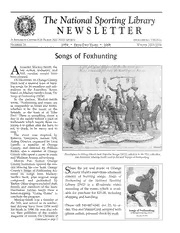
NSLM Newsletter - Winter 2006
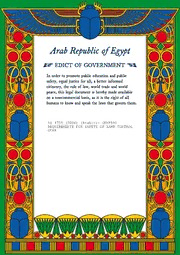
ES 4755: GENERAL REQUIREMENTS FOR SAFETY OF LAMP CONTROL GEAR

TS 125 423 - V9.8.0 - Universal Mobile Telecommunications System (UMTS); UTRAN Iur interface Radio Network Subsystem Application Part (RNSAP) signalling (3GPP TS 25.423 version 9.8.0 Release 9)

Banksys Xenta Benutzerhandbuch
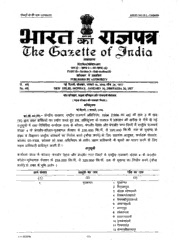
Extraordinary Gazette of India, 2006, No. 78

The Ratline

DTIC ADA454032: The Report of the Department of Defense on Fiscal Year 2006 Planned Expenditures from the Department of Defense Base Closure Account 2005
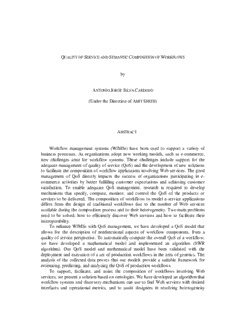
by (Under the Direction of AMIT SHETH) Workflow management
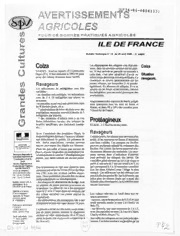
Avertissements Agricoles - Grandes cultures - Ile de France - 2006 - 13
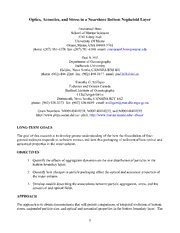
DTIC ADA521948: Optics, Acoustics, and Stress in a Nearshore Bottom Nepheloid Layer
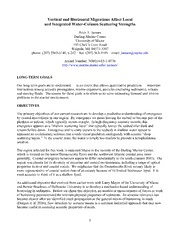
DTIC ADA521957: Vertical and Horizontal Migrations Affect Local and Integrated Water-Column Scattering Strengths
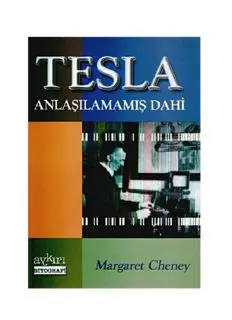
Tesla Anlaşılamamıs Dahi

Greek Government Gazette: Part 2, 2006 no. 551
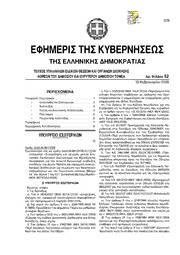
Greek Government Gazette: Part 9, 2009 no. 52

Process and Plant Safety
